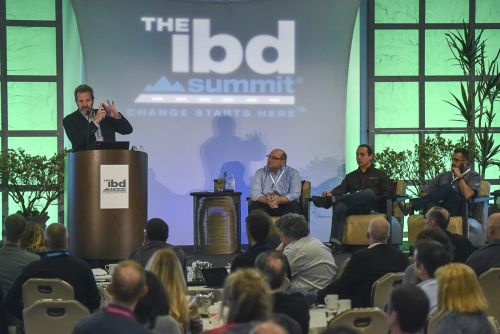TEMPE, Ariz. (BRAIN) — Motorcycle industry experts offered a glimpse of the challenges and opportunities in their market to a crowd of 250 bike industry members attending the IBD Summit this week in Tempe, Ariz.
The powersports/motorcycle market shares several similarities with the bike industry. Chief among them:
- A reliance on the race/enthusiast customer for growth.
- Decline in sales and motorcycle dealerships following the 2008 recession
- Both are recreational: Want-based versus need-based industries
- An aging, mostly white, male customer base
- Category intimidation: It's easy to scare away newbies due to tech language, sexist and classist attitudes, style, and fear of looking stupid.
- Opportunity to reach new audiences including more women, more non-whites, and younger men (under 35)
- Fairly fractured OE market with various brands battling for marketshare
- Growing online marketplace for used motorycles, growing consumer-direct sales
And like the bike industry, "growing the pie is the biggest challenge we have in powersports," said Robert Pandya, one of the panelists and a 20-year moto veteran who's worked at the retail, supply and media side of the industry and is also a lifelong enthusiast. He estimates household penetration to be 2 percent for the motorcycle industry.
But panelists noted ways the industry is combating each of these challenges. Scot Begovich, director of data solutions for Experian Marketing Services, said the industry has come together to promote and market the moto lifestyle with campaigns that promote adventure and fun to larger audiences.
Retailer George Gatto left the bike industry and invested in the motorcycle business nine years ago. He still owns a small bike shop, but the moto business has been his focus. He owns two Harley-Davidson dealerships in Pittsburgh and is a member of the Harley-Davidson dealer advisory group.
"I hated getting squeezed all the time," Gatto said about his relationships with suppliers when he ran a multi-store bike business. "When Pat [Hus] asked me to talk on this panel, I got the same knot in my stomach that I would get when I was in the bike business," he added.
Gatto noted that several of the imported moto brands operate much like the majority of suppliers do in the bike business, "shoving inventory" down dealers' throats and not offering dealer support. "The [import] business is tough and a lot like bicycles," he added, noting how Kawasaki recently announced that it's selling P&A online to consumers.
But that's made his decision to align closely with Harley-Davidson, which holds the largest marketshare at 34 percent of the industry, an easy one. He describes Harley as a customer-led business that strives to know what happens at its franchises.
Gatto said he works closely with Harley-Davidson on inventory control, and the company closely polices MAP and fines dealers who violate its policy. It also offers extensive training. Top company executives are accessible — "they listen and talk to me," Gatto said. "They know what I'm selling as I'm selling it and adjust their production, so there's no discounting."
"Vote with your dollars," he advised bike dealers. "Some vendors' business plans don't match yours. Deal with guys that give you what you want when you want it."
Eric Anderson, who's worked in retail, wholesale and the distribution of aftermarket apparel, helmets and products in moto for nearly three decades, served as a moderator for the panel. But he offered tips based on what he's seen work in motorcycle retail.
He stressed keeping lean inventory selection on the show floor and being a showroom rather than a storeroom to avoid discounting; relying on statistics and numbers that can serve as benchmarks for conversion rates, sales and profit by product category, and profit per square foot, among other key metrics (the motorcycle industry has a top 20 club that shares P&L data — a model taken from the automotive industry); selling packages rather than individual products; engaging with female customers more; and experimenting with new marketing strategies, like having a bike display and contest at a local movie theater.
Turn to the Feb. 1 issue of Bicycle Retailer for more coverage of the conference.


